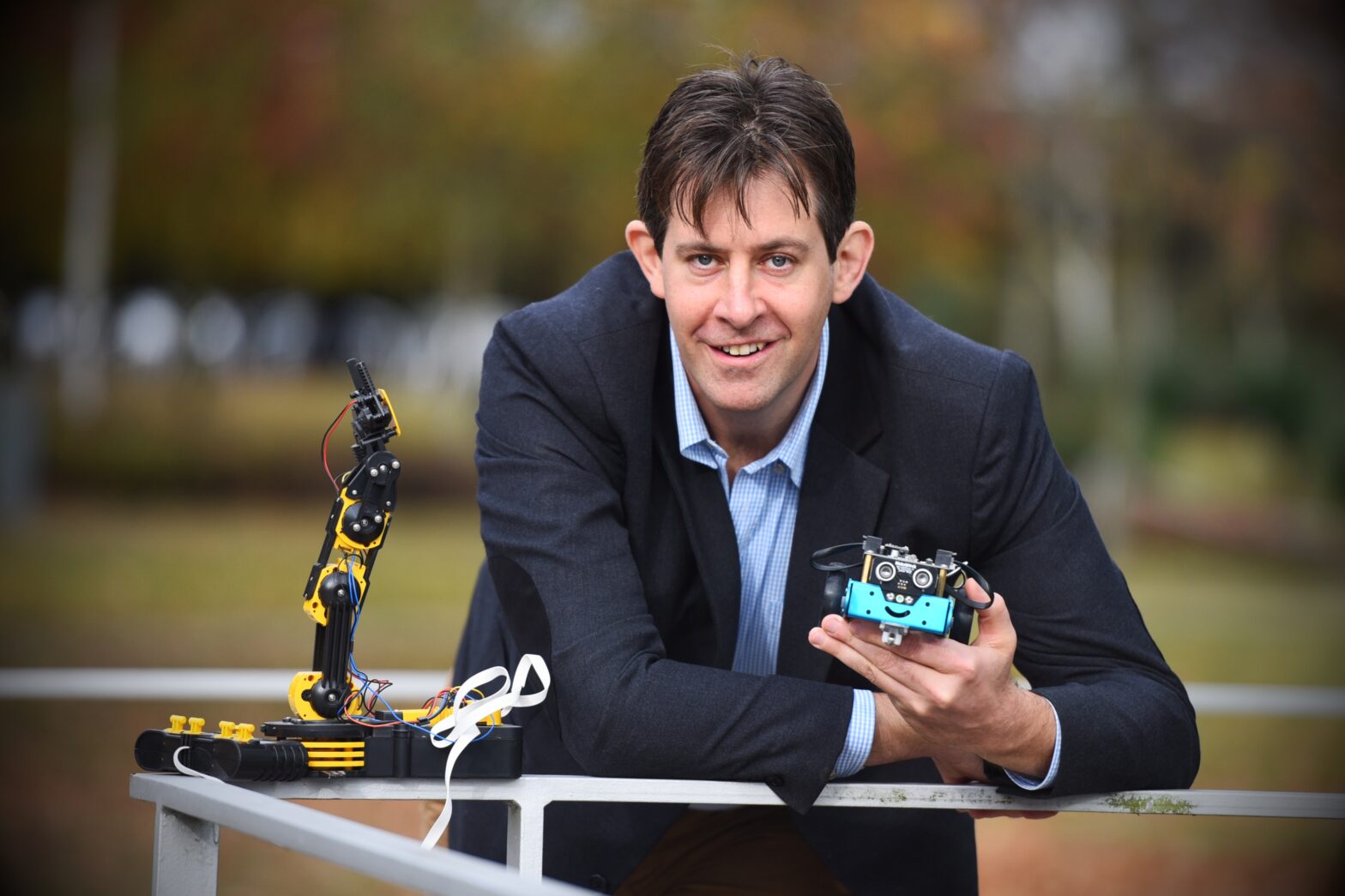The developing robotics sector presents an exciting opportunity for investors. Back in 2015, companies spent £55 billion globally on robotics; this figure is expected to double to nearly £105 billion by 2019, while the number of domestic household robots is set to increase to 31 million between 2016 and 2019, up from just 3,700 in 2015.
The advance of robotics is being made possible by progress in technologies such as Artificial Intelligence (AI) and Machine Learning (ML). AI is the simulation of human intelligence processes by machines, and ML is the application of that artificial intelligence so that systems automatically learn and improve from experience without being explicitly programmed.
With these technological advances, the reality is that many of us will in the next two – five years be working alongside a collaborative robot (cobot), whether that’s a physical robot or a virtual AI bot, such as British firm Botskill’s chatbot that mimics human conversation using artificial intelligence. Already widely used in Southeast Asia, chatbots help to improve customer engagement and open up new revenue channels.
Market research firm, TechNavio, predicts these cobots will become the fastest growing subsector of robotics, with the market growing at a compound annual growth rate of 50 per cent to 2019. Cobots, from a $95 million sector in 2014, will become a sector worth more than a billion dollars by the end of the decade.
While to some the news of robots taking our jobs paints a negative picture, cobots are designed to work alongside humans, not replace them. In fact, researchers at MIT found that robot-human teams were about 85% more than productive than either humans or robots alone. Take ZOA Robotics, a company in stealth mode that has raised Seed Enterprise Investment Scheme funding.
The British firm is building autonomous four-legged robots that can walk up/down stairs and across uneven surface to carry equipment and make inspections. ZOA’s robots boost productivity and safety. When used for logistics, the robots reduce workers time spent on fetching parts, equipment or consumables. While remote inspection and maintenance via robots means that workers no longer need to visit hazardous environments.
With Theresa May pledging to invest £2 billion to back the development of robotics and biotechnology, there should be a step-change in improving the UK’s competitiveness in the global robotics arena. In 2017, we’d estimate that up to one hundred robotics and AI-related business would have received funding in the UK, both from Innovate UK grants (robotics and autonomous systems open calls) and from venture capital funds. Let’s assume that a typical funding amount is £250,000, this would suggest up to about £25 million of investment through the year.
The Government is providing enough support on the (grant) funding side. However, we’d like to see more initiatives on the demand side. Robotics and AI will transform the operations of a wide range of sectors across the whole economy. It would be great to have a scheme that subsidises the cost of a robotics implementation for a business, also making available expertise and change management support to make it easier for businesses to automate.
Although it is likely to still take some time to reach its full investment potential, the sector looks promising for further development. Specialist robotics research firm Tractica estimates that the next five years will revolutionise the way we think about robots. Non-industrial robot revenues will probably grow tenfold within this period, and important for investors to note, we will start to view robots not just as hardware, but also as software.
While raising investment for the first British Robotics Seed Fund, we already saw an increasing number of entrepreneurs moving into the space (an estimated 50% year-on-year growth in the number of start-ups) and much more acceptance of robotics and AI as an investment theme for mainstream investors. Consequently, we’d expect see approximately £1 billion going into early-stage innovation in this area by 2020.
It’s true that investors remain wary of hardware-heavy products, so the onus is really on the start-ups to demonstrate that they have capital intensive business models, which is increasingly possible for robotics companies who use frugal manufacturing approaches and provide service-based offerings.
2018 will be the first year where we see non-industrial robots start to become more visibly deployed in the real-world in areas such as logistics, construction and agriculture, as well as the domestic environment. This public familiarisation with service robotics will be an important stepping stone in the mainstream adoption of the new technologies.
Opportunities for significant investment returns in this sector are becoming widespread, with more than 50 robotics and automation companies being acquired over the last year, for a total consideration of more than £20 billion.
We invested in six robotics and AI start ups in our first full year and now that we have an established fund which provides direct exposure to robotics start-ups, we’re hoping to raise more than £1.5 million for UK-based robotics and AI companies through SEIS/EIS investment in the British Robotics Seed Fund II and also our crowdfunding site Britbots Crowd; and we’d expect the existing portfolio value to increase by at least 50 per cent.
Dominic Keen is the founder of Britbots.






